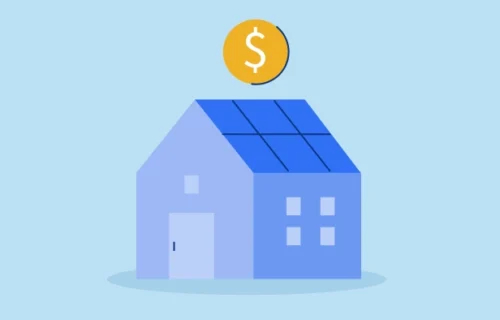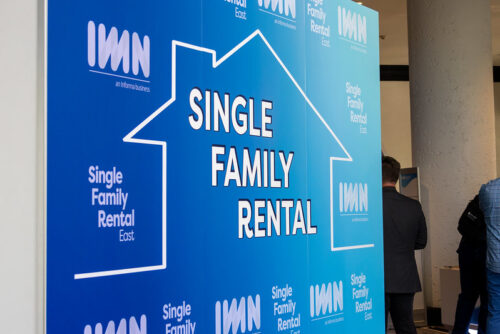
Connect with a Lima One expert today!
If you’d like to know more about this topic or see how it applies to your project, let’s talk.
Starting a Short Term Rental Investment Portfolio
STR Real Estate is Here to Stay
Investing in rental properties has long been a popular wealth-building strategy for real estate investors—and with good reason.
In an environment where rent is steadily increasing, like we’ve seen for single-family rentals (SFRs) in most markets during 2021 and 2022, the ability to profit is even greater when investors use properties financed by investment loans for rental property.
In many cases, cash flow for rental properties is even better with short-term rentals – rented not by the year but in smaller increments of time, such as daily or weekly vacation rental investment properties.
The short term rental market is growing, and we’re seeing trends like this one in New York, where you’ll find more Airbnb listings than apartments to rent.
And that growth is not abnormal; data from AirDNA shows STR listings grew by 9.4% in 2021, and 2022 is expected to outpace past years with a listing growth of 20.5%. Despite listings increasing by less than 10%, demand for short term rentals increased 27.5%.
As rate increases are chasing rent increases, real estate investors are turning to STR real estate to help generate additional passive income. If you’re wondering how to start a short-term rental business, this blog will help you find answers.
Starting a STR Portfolio
The short term rental industry started out as a fringe business that thrived on classified ads and word of mouth referrals. Now, thanks to platforms like VRBO and Airbnb, the concept has become a popular investment strategy.
Investing in short-term rental properties offer investors one major advantage over long term rentals: the ability to generate more income. Side by side comparisons show that short term/vacation rentals often net two times cash more than their long term rental property counterparts.
This makes STRs a prime opportunity not only for everyday real estate investors, but also for larger investment groups such as funds. So, where is the best place to start?
Building Your Short Term Rental Property Portfolio
First things first, it’s important to be familiar with the terminology surrounding the STR industry. To succeed with this investment strategy, you need to know the terms and factors to understand how to start a short-term rental portfolio or vacation rental business.
When you are considering investing in a short-term rental vs. a long-term rental, you need to understand the different terms that come with more unstable rental income that STRs offer.
The big difference in short-term vs. long-term rental income is that long-term rental property income is generally stable because these investment properties have year-long leases in place.
Short-term rental occupancy is more irregular, based on seasonality, the market, popularity of the location, etc. So there are different ways of measuring both occupancy and income for STRs.
It’s also important to know how to build a rental portfolio.
Start small: If you’re just starting out as a real estate investor, ensure you know how to increase your property’s value and how to manage tenants.
Know what makes a good rental property: Is your rental investment property in a city with a growing job market? What does the economy growth look like? How many renter-occupied homes are in the area? What is the appreciation of homes in the area? Consider these things when purchasing a rental property because the answers to those questions will ultimately decide whether or not your property is successful. Note that the answers to these questions may be different for STRs than for traditional single-family rentals.
Are Short Term Rentals Good Investments?
Although short-term rentals might seem like an easy way to make money, they require a sound investment strategy to turn a profit. The vacation rental and short-term rental market can be competitive if it is in a popular vacation spot saturated with offers.
Investors need to ask:
- Are short term rentals a good investment in this market?
- Have I explored all options to ensure my rental property creates steady cash flow?
- Do I understand all the local laws regarding short term rentals and vacation rentals?
A short-term property can be profitable under the right management. But don’t think that it will generate passive income without effort. Before you invest your money, you have to look at several components that determine whether your property will create a profit or not.
STR Trends for Investors to Watch
Short term rentals are here to stay, and the industry has given investors a great way to create passive income.
Investors should be aware of these trends to maximize their profits:
- STR startups will consolidate with larger tech companies like Yardi and RealPage to create bigger STR owners.
- Technology will be a huge part of the short term rental property industry.
- Attracting guests and tenants will become more competitive.
Financing Short Term Rentals
Financing is one of many considerations real estate investors should have in mind when considering investing in short-term rentals.
But with a rosy outlook for STRs when it comes to increasing demand, higher occupancy, and higher average daily rates, the revenue numbers may pencil out for your short-term rental investment.
If you’re ready to purchase a short-term rental property, do a cash-out refinance of your current portfolio in order to add rental properties to use as short-term rentals, or find out what type of rental portfolio loans, vacation rental loans and short-term rental property loans are available, Lima One can help.
We provide extensive industry knowledge and private lending expertise to those investing in rental properties across the nation. Contact us to get started with your next short-term rental investment.
Subscribe for More Insights
Get the latest industry news & Lima One updates.









